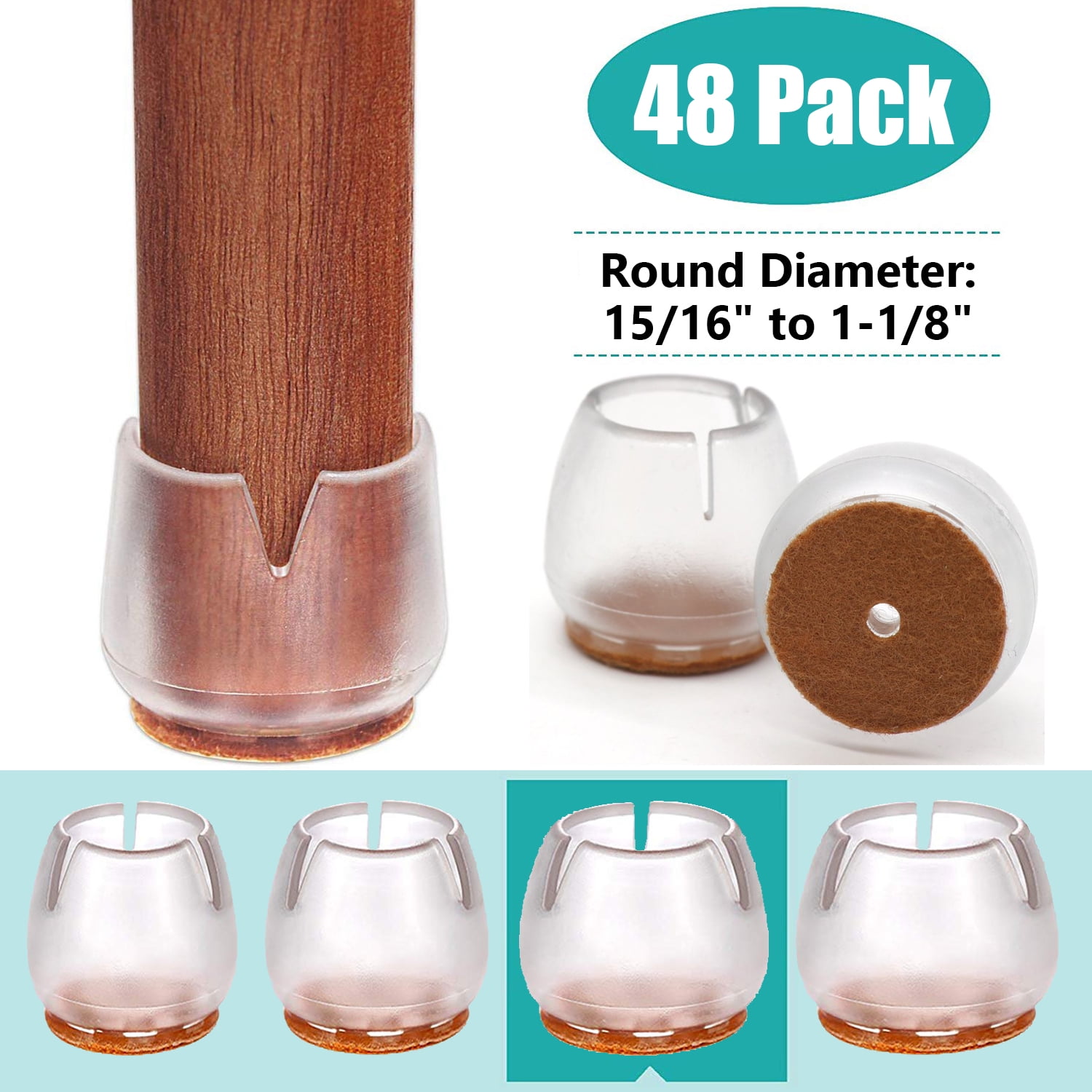Types and Materials of Dining Room Chair Leg Covers

Protecting your floors and enhancing the aesthetic appeal of your dining chairs are key reasons for using chair leg covers. The choice of material significantly impacts their performance and lifespan. Understanding the properties of various materials is crucial for selecting the right covers for your needs.
Material Comparison: Felt, Silicone, Plastic, and Wood
Different materials offer distinct advantages and disadvantages. Felt, silicone, plastic, and wood each present a unique set of characteristics that cater to various preferences and needs.
| Material | Durability | Cost | Aesthetic Appeal | Ease of Cleaning |
|---|---|---|---|---|
| Felt | Moderate; prone to wear and tear with heavy use. | Low to Moderate | Generally understated; available in various colors. | Easy; can be spot-cleaned or hand-washed. |
| Silicone | High; durable and resistant to wear. | Moderate to High | Modern and sleek appearance; often transparent or in muted colors. | Easy; wipe clean with a damp cloth. |
| Plastic | High; very durable and resistant to damage. | Low to Moderate | Can be less aesthetically pleasing; often comes in basic colors. | Easy; wipe clean with a damp cloth. |
| Wood | High; very durable if made from a hard wood. | High | Elegant and sophisticated; can match existing furniture. | Moderate; requires regular dusting and occasional polishing. |
Styles and Designs of Chair Leg Covers
Chair leg covers come in various styles to suit different chair designs and personal preferences. The fit and appearance of the cover significantly contribute to its overall effectiveness and aesthetic integration with the existing furniture.
The three most common styles are booties, socks, and caps. Booties completely encase the chair leg, offering maximum protection. Socks are typically tubular and slip onto the leg, providing good protection while offering more flexibility in terms of fit. Caps, on the other hand, cover only the bottom of the leg, primarily protecting the floor. The choice of style depends on the shape and size of the chair leg, as well as the desired level of protection. For instance, booties are ideal for tapered legs, while socks might be better suited for straight legs. Caps are a good choice for chairs with decorative elements at the bottom of the legs that you wish to showcase.
Buying Guide and Considerations for Dining Room Chair Leg Covers

Choosing the right chair leg covers can significantly enhance the look and longevity of your dining room chairs. Careful consideration of several factors ensures a successful purchase that complements your existing décor and protects your furniture. This guide provides a step-by-step approach to selecting the perfect covers.
Measuring Chair Legs for Accurate Sizing, Dining room chair leg covers
Accurate measurement is crucial to ensure a proper fit. Improperly sized covers can look sloppy or even fall off. Begin by identifying the shape of your chair legs – are they round, square, or tapered? This will influence your measurement technique.
- For round legs: Use a flexible measuring tape to determine the circumference at the widest point of the leg. Imagine wrapping the tape measure around the leg like a belt. Record this measurement.
- For square or rectangular legs: Measure the length of each side of the leg’s widest point. If the leg tapers, measure at the point where the cover will sit. Record both the length and width.
- For tapered legs: Measure both the widest and narrowest points of the leg. This will help you select covers that accommodate the varying diameters. Note the distance between these points as well, to ensure the cover is long enough.
- Measure the height of the leg from the floor to the point where you want the cover to sit. This determines the required length of the cover.
Visualize: Imagine a close-up of a round chair leg with a measuring tape wrapped around it. Then, picture a square leg with a ruler measuring each side. Finally, envision a tapered leg with measurements taken at both the thickest and thinnest parts.
Factors to Consider When Choosing Chair Leg Covers
Selecting chair leg covers involves considering several factors to ensure they match your needs and aesthetic preferences.
- Color: Choose a color that complements your existing dining room décor. Neutral colors like beige, brown, or gray are versatile options, while bolder colors can add a pop of personality.
- Material: The material determines durability, comfort, and aesthetic appeal. Consider materials such as durable polyester, plush velvet, or easy-to-clean silicone. Each offers a different level of protection and visual texture.
- Design: From simple and sleek to ornate and decorative, the design should complement your chairs and overall style. Consider patterns, textures, and embellishments to find the perfect match.
- Budget: Chair leg covers range in price, depending on material, design, and quantity. Set a budget beforehand to guide your selection.
Revised Article on Choosing Dining Room Chair Leg Covers
[Insert Article Text Here – This section requires the original article text to be provided for rewriting.]
